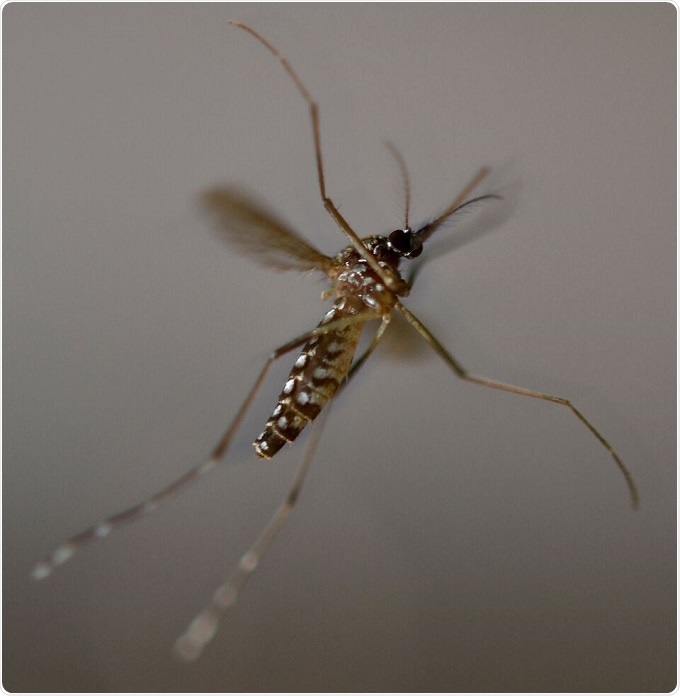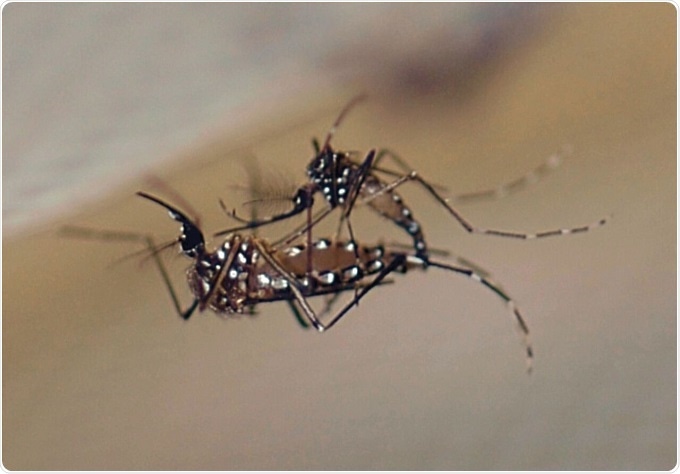They undertook a modelling study based on six states in the US in areas that are at risk of Zika emergence. The main finding of this study was that the total cost of Zika in these sates had a range that went from approximately 183.4 million dollars to 1.2 billion dollars.
These values were based on calculations that looked at the direct costs, as well as the cost of lost productivity if there was an outbreak, using an attack rate of 0.1% up to 1%, which was their worst scenario.
These estimates, to see how much Zika would cost, could be used to think about the cost effectiveness of an intervention being implemented.
It’s important to think about the total burden that Zika poses because it isn't a disease that causes mortality like influenza for example. Zika has a very different impact and I think estimates like this are important to get a baseline understanding of what the economic consequences would be for Zika outbreaks of various sizes in those parts of the United States that are at risk.

Flying Aedes aegypti female. ©Oxitec
How does this compare to the amount being spent on preventing the spread of the disease?
It depends on how it is classified. In the United States, vector control is done at a local level, for example at a County or a Municipality level and that varies from state to state and city to city.
For example, one of the best mosquito control districts in the United States is Monroe County, the Florida Keys Mosquito Control District, in the Key West area. They spend about 1.1 million dollars per spring for mosquitoes, but this is very small compared to what the burden can cost, but many other municipalities don't spend at that level.
Our vector control activities are not going to cost as much as that, and if these estimates are true a Zika outbreak would be costly.
The other issue is that I'm not factoring in the cost for vaccines and diagnostics etc. There is substantial investment going on for Zika vaccines and Zika diagnostics that are part of the puzzle to stopping Zika. Vector control by itself is not necessarily a good comparison to what the economic impact of an outbreak could be if the assumptions in this economic model are true.
What can be done to slow the spread of diseases like Zika?
Zika is a disease that is spread by mosquitoes, right now, the nearest vaccine is entering Phase II clinical trials, and so it is going to be several years before a vaccine is available.
We need to focus on this vector, the Aedes mosquito, a mosquito that has plagued the human race for a long time. It's also the vector of Yellow Fever, Chikungunya, Dengue, all three diseases have a substantial impact worldwide.
We need to get aggressive with vector control and beat this mosquito back from the United States. It has been done before in the early founding era of this country, there were yellow fever outbreaks all the way up into Boston and there was a concerted effort to rid this area of that mosquito.
Anna Drexler (World Health Organisation): Vector control response to Zika - pathways for new tools
That type of commitment to vector control is something that needs to happen to take control of Zika because there are several states in the southern parts of the United States that are at risk.
We've already seen local transmission of Zika both in Florida and in Texas. It will not be surprising that other states in those areas where this mosquito calls home may have spread again in upcoming seasons.
This is going to take a very concerted effort to go after the mosquito with vector control as well as getting people to get rid of standing water, for example, on their properties where mosquitoes breed.
In addition, increasing awareness among physicians to test for Zika so that we have an understanding of the areas in which it's spreading, and aggressive care for pregnant women who may have been exposed.

Piracicaba Mayor Gabriel Ferrato Releasing Mosquitos ©Oxitec
What are the main considerations when determining how much to invest in prevention, control and response?
The main consideration is understanding what the true burden of an infectious disease is and how much it costs in terms of direct and indirect costs, as well as how many people are dying, how many people are getting hospitalized, and what burden it is causing on the healthcare system. Then you have to weigh those against what the intervention may be.
The intervention here, with Zika disease, is the quest for a vaccine. When you look at the burden of Zika in a town, it’s important to understand how much the vector control costs are going to be and how much it is going to cost to spray and to clean up the standing water, for example. Then you offset those against what the expected burden of the disease is.
This is difficult to do with Zika because it is not something that traditionally we can quantify, it's very easy to quantify something when people are dying because of a disease, but Zika has a different effect. It's a mild illness for many people, however the cost of a microcephalic child is about 10 million dollars over the course of their life. That's something that must be incorporated.
Therefore, if you prevent one case of microcephaly from happening that is a 10 million dollar saving. It puts the parameters of vector control, and how much vector control costs, into perspective when you see how costly one case of microcephaly is.
Why is it important to quantify the potential economic burden of Zika under different scenarios?
You must remember that the paper published is a modelling study. Modelling studies are only as valid as their assumption, therefore, in order for the model to be robust and to give actual evidence, you need to have a variety of ranges.
In this study, the attack rate is varied by the percentage of the population getting infected, ranging from .01% to 1%. There is a danger when you present models, only the worst-case scenario gets repeated in the press.
It is important that you have various ranges with different assumptions and that you're very transparent about what those assumptions are when you're presenting modelling data. You can skew perceptions if you only present the worst-case scenario or the best-case scenario. I think that's why models have to be taken with caveat but is a great way on how expensive this disease could be if it's allowed to spread.

Aedes aegypti mating ©Oxitec
What are the main challenges when evaluating the potential impact of a Zika epidemic?
The biggest challenge of epidemiological prediction is that you don't have complete certainty. We don't know all the variables that are at play such as, the attack rate that will be in each of these areas, how aggressive vector control will be, or how many children will be born with microcephaly.
We don't understand all the factors yet that determine whether a fetus develops microcephaly or doesn't. Those types of uncertainties constrain a models ability to predict. This is something that must be incorporated into policy decisions when interrupting economic modelling like this.
What do you think the future holds for Zika prevention?
I think that it's an exciting time for Zika prevention, we've been doing the vector control type activities like spraying for a long time and getting rid of standing water. I think right now we're at the cusp because we do have 21st century solutions available.
For example, genetically modified male mosquitoes that are sterile, which have been tried in places like Brazil and Grand Cayman and have seen promising results. I think that we'll see an increase in willingness to battle Zika in a truly modern way, using an elegant solution with genetically modified mosquitoes.
In addition to genetically modified mosquitoes, there are also irradiated mosquitoes and mosquitoes that are infected with a different type of bacteria. All three of these solutions offer the prospect of dealing with these mosquitoes in a manner that hasn't been available to us before.
I think that it’s important when you look at what the burden of Zika is, that the human race puts everything on the table and goes after these mosquitoes once and for all, using tools like the altered mosquitoes in order to drive down the population to as low as possible. This could be the final push to get things even lower and get control of disease like Zika.
If you look at our ability to do cost effectiveness analysis, it's important that each mosquito control district in the United States looks at what their burden of Zika would be and what their costs are, when considering using altered mosquitoes in addition to their current basic vector control activity.
On that point, the future is bright, but only if people are willing to embrace these new technologies that I think are the best hope for controlling not just Zika but also Dengue and Chikungunya, Yellow Fever, which are major public health threats today.
It is important that people realize that emerging infectious diseases are continually going to be occurring. Whether it is Zika or some other disease that we must be ready to rapidly conduct the science to come up with counter-measures to control these outbreaks, being as aggressive as possible. These types of infectious disease outbreaks aren't going anywhere. I think it is important that we have a very robust ability to predict these outbreaks and prevent and respond to them.
Where can readers find more information?
About Dr Amesh Adalja
 Dr. Adalja is a Senior Associate at the Johns Hopkins University Center for Health Security. He is also a Clinical Assistant Professor in the Departments of Medicine, Critical Care Medicine, and Emergency Medicine at the University of Pittsburgh School of Medicine and UPMC.
Dr. Adalja is a Senior Associate at the Johns Hopkins University Center for Health Security. He is also a Clinical Assistant Professor in the Departments of Medicine, Critical Care Medicine, and Emergency Medicine at the University of Pittsburgh School of Medicine and UPMC.
He also serves on the City of Pittsburgh’s HIV Commission. He is board certified in internal medicine, emergency medicine, infectious diseases, and critical care medicine.
Dr. Adalja is currently a member of the National Quality Forum’s Infectious Disease Standing Committee, the Infectious Diseases Society of America’s (IDSA) Diagnostics Committee.
He is also a member of the American College of Emergency Physicians Pennsylvania Chapter’s EMS & Terrorism and Disaster Preparedness Committee as well as the Allegheny County Medical Reserve Corps.
He was formerly a member of the IDSA Public Health Committee and the US Department of Health and Human Services’ National Disaster Medical System, with which he was deployed to Haiti after the 2010 earthquake and also selected for their mobile acute care strike team. He has also served on US government panels tasked with developing guidelines for the treatment of botulism and anthrax in mass casualty settings, the system of care for infectious disease emergencies, as well as a FEMA working group on nuclear disaster recovery.
Dr. Adalja is an Associate Editor of the journal Health Security (formerly Biosecurity and Bioterrorism). He was a contributing author for the Handbook of Bioterrorism and Disaster Medicine, and he has published in such journals as the New England Journal of Medicine, the Journal of Infectious Diseases, Emerging Infectious Diseases, and the Annals of Emergency Medicine. He also has served as a book reviewer for JAMA.
Dr. Adalja is a Fellow of the Infectious Diseases Society of America (for whom he serves as a media spokesperson), the American College of Physicians, and the American College of Emergency Physicians. He is a member of various medical societies, including the American Medical Association, the HIV Medicine Association, and the Society of Critical Care Medicine.
Dr. Adalja completed two fellowships at the University of Pittsburg h— one in infectious diseases, for which he served as chief fellow, and one in critical care medicine. He completed a combined residency in internal medicine and emergency medicine at Allegheny General Hospital in Pittsburgh, where he served as chief resident and as a member of the infection control committee.
He is a graduate of the American University of the Caribbean School of Medicine, and he obtained a bachelor of science degree in industrial management from Carnegie Mellon University.
Dr. Adalja is a native of Butler, Pennsylvania.